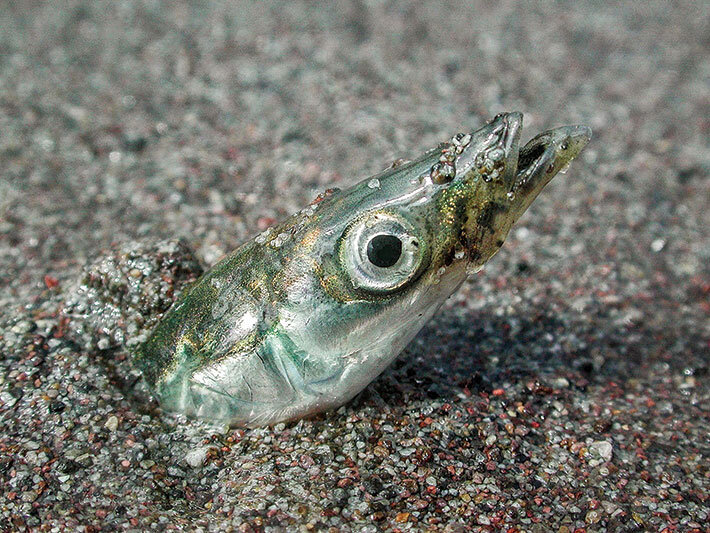Sand Lance Facts
The humble sand lance (Ammodytes personatus) is a small, silver forage fish that plays an important role in the ecosystem’s food web. Staying true to its name, the sand lance is known for burrowing face-first into the sand on the seafloor. In recent years, conservation efforts have been made to protect the sand lance population and their habitat. Protecting this population helps to conserve the variety of birds, fish, and mammals that eat them by keeping their food source viable.
DID YOU KNOW?
Not quite at the bottom of the food chain, the sand lance grows by feeding on plankton. Once the sand lance has fattened up, it becomes prey for Chinook salmon, which in turn are prey for the Southern Resident Killer Whales.
Up to 20 sand lance can fit in the beak of a tufted puffin while they are fishing underwater.
Sand lance are widely distributed through the Salish Sea and play a critical role in the food chain.
While they are able to bury themselves in varying kinds of sand from gravel to fine sand, they favor coarse sand allowing them to break through rapidly and breathe comfortably, even while buried underneath.
When the sand lance isn’t searching for plankton to eat, they spend most of their time in the seabed hiding from predators and waiting for their next opportunity to feed.
Photo by Mandy Lindeberg. Banner photo by David Ayers.


